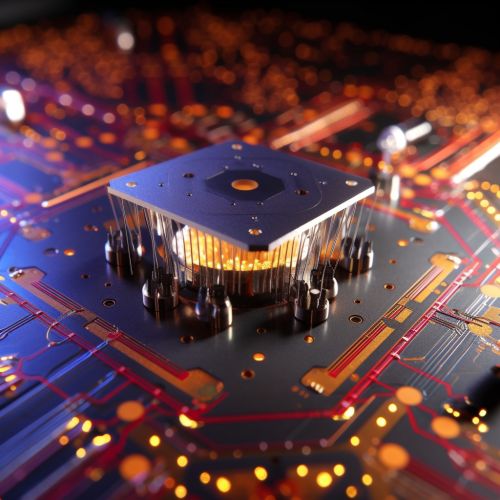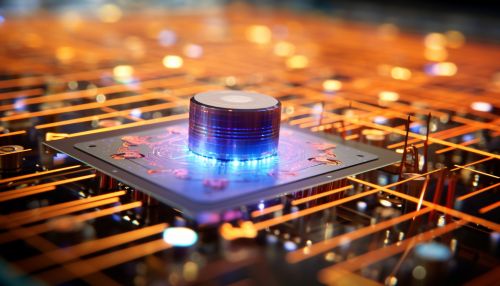Superconducting Qubits
Introduction
Superconducting qubits are a type of superconducting circuit that behave as artificial atoms. They are used as the basic building blocks in quantum computing and quantum information processing. These circuits are designed to exploit the quantum mechanical properties of superconducting materials, enabling the creation of quantum bits, or "qubits," which are the fundamental units of information in quantum computing.


Quantum Mechanics and Superconductivity
The behavior of superconducting qubits is governed by the principles of quantum mechanics, a branch of physics that describes the behavior of particles at the smallest scales. Quantum mechanics introduces the concept of superposition, which allows qubits to exist in multiple states simultaneously, and entanglement, which creates strong correlations between qubits even when they are separated by large distances.
Superconductivity, on the other hand, is a quantum mechanical phenomenon where certain materials, when cooled to very low temperatures, exhibit zero electrical resistance and the expulsion of magnetic fields. Superconducting qubits leverage these properties to perform quantum computations with high efficiency and low error rates.
Types of Superconducting Qubits
There are several types of superconducting qubits, each with its own design and operational principles. The three most common types are the charge qubit, the flux qubit, and the phase qubit.
Charge Qubits
Charge qubits, also known as Cooper pair box qubits, are based on the principle of Cooper pair tunneling. In these qubits, the quantum state is determined by the number of Cooper pairs that have tunneled across a Josephson junction.
Flux Qubits
Flux qubits are designed to be sensitive to the magnetic flux through a superconducting loop. The quantum state of a flux qubit is determined by the direction of the current flowing around the loop.
Phase Qubits
Phase qubits are similar to charge qubits, but they operate in a regime where the phase difference across a Josephson junction determines the quantum state. These qubits are typically less sensitive to charge noise, making them more robust against certain types of errors.
Superconducting Qubit Fabrication
Superconducting qubits are fabricated using techniques similar to those used in the production of conventional semiconductor devices. The process typically involves the deposition of a superconducting material onto a substrate, followed by photolithographic patterning and etching to create the desired circuit geometry.
Quantum Coherence and Decoherence
One of the key challenges in the development of superconducting qubits is maintaining quantum coherence, the ability of a qubit to maintain its quantum state over time. Decoherence, the loss of quantum coherence, is a major source of errors in quantum computing and is caused by interactions between the qubits and their environment.
Applications
Superconducting qubits are primarily used in the development of quantum computers, devices that use the principles of quantum mechanics to perform computations. Quantum computers have the potential to solve certain types of problems much more efficiently than classical computers. Other applications of superconducting qubits include quantum simulation, quantum communication, and quantum sensing.
Future Directions
Research in superconducting qubits is a rapidly evolving field, with ongoing efforts aimed at improving qubit coherence times, developing scalable qubit architectures, and creating error correction schemes to mitigate the effects of decoherence.
